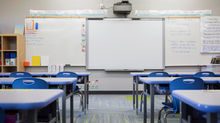Personal Learning Networks: My Experience and Thoughts
- Breanna Dixon
- Sep 10, 2017
- 2 min read
Personal learning networks are education's new way of connecting ideas, students, teachers, and educators. It is taking the learning beyond the classroom, and in many cases, puts students in control of their learning.
Personal learning networks, or PLN, help to promote diversity in education because it encourages learners to engage with people in diverse careers, ethnicities, and languages. When you open up the classroom to a world where the "scales for such sharing are literally astronomical to consider" (Bonk, p 2), you are met with people who come from varieties of backgrounds that it can really open one's eyes.

The PLNs mentioned in both Bonk and Bernard's articles I have not had experience with before. When I was an elementary student we were still using traditional note-taking methods with pen and paper. As I entered middle school, teachers would have us type our papers using Microsoft Word, but it was not used as a way to really collaborate with others and take advantage of the resources we had in class. For the most part, my PLN in middle school and high school was the usage of the SmartBoard, but even then, it was used mainly by the teachers.
In college, I would consider YouTube to be my PLN outside of the classroom. Often, if I find myself still confused on a topic, I will search it on YouTube so that I can understand it better. It's not as participatory as other PLNs, but it is a valuable tool.
As a future educator, I would love to experiment with more PLNs to use in my classroom--both for my students and for myself. For myself, I would feel inclined to experiment with using the Powerful Learning Practice program mentioned in Bernard's article, "5 Personal Learning Networks (PLN) for Educators." This course allows educators to take a class to keep their instruction relevant to the world that students are experiencing. I wouldn't want to be one of those teachers who uses dated examples or content that students can't relate to.
For my students, I like the idea of them following a school-appropriate blog similar to the William Penn blog in Bank's chapter, "Learning at your Service." I think students would have a lot of fun learning about a historical figure or history if it was presented in a format they are used to. It would make the learning more meaningful for students because history wouldn't feel so "in the past" as it does when presented on PowerPoint slides or from the textbook. Student engagement would also be more meaningful because it will "foster reflection, perspective taking, and higher-order thinking" (Bank p 5).
I have not had a lot of experience with personal learning networks, but I am intrigued by the idea of them. I think they would be a wonderful addition to any classroom.
References:
Bernard, Sara. "5 Personal Learning Networks (PLN) for Educators." 19 May 2011. KQED Inc. 8 September 2017.
Bonk, C. J. (2009). The World is Open: How Web Technology is Revolutionizing Education. San Francisco, CA: Jossey-Bass. (Ch. 11)







Comments